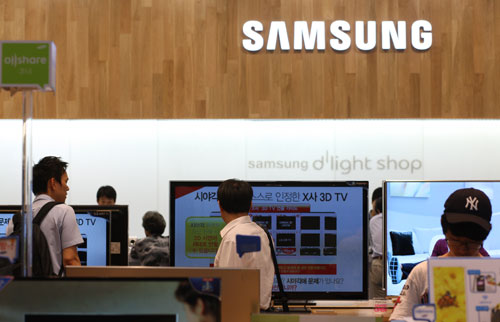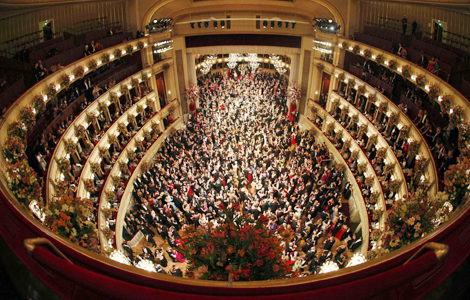Samsung to spin off LCD division
Updated: 2012-02-27 09:29
By Jun Yang (China Daily)
|
|||||||||||
|
Visitors looking at a Samsung Electronics Co 3D light-emitting diode television at the flagship store in the company's headquarters in Seoul. the company said it will spin off its unprofitable liquid-crystal display division. [Photo/China Daily] |
SEOUL - Samsung Electronics Co, the world's largest maker of flat panels, said it will spin off its unprofitable liquid-crystal display division as the company focuses on making thinner, brighter TVs.
The new company, provisionally named Samsung Display Co, will be set up on April 1 with paid-in capital of 750 billion won ($668 million), Samsung said in a filing last week.
Samsung's liquid-crystal display business had an operating loss of 750 billion won last year as global television sales slowed. The spinoff company may eventually merge with the Samsung Mobile Display venture that makes organic light-emitting diode panels, as Samsung prepares to meet growing demand for the new technology, said James Song, an analyst at Daewoo Securities Co.
"It's a good decision for Samsung Electronics," Seoul-based Song said by telephone. "The long-term direction for their display business is going OLED (organic light-emitting diode). They can improve efficiency of investment by combining similar businesses."
Samsung is reviewing an eventual merger of its liquid crystal display and organic light-emitting diode operations, Nam Ki Yung, a Seoul-based spokesman, said by phone.
Samsung fell 0.1 percent to 1,175,000 won at the 3 pm close of trading in Seoul, while the Kospi index gained 0.1 percent. The consumer electronics maker has climbed 22 percent in the past 12 months, compared with a 0.6 percent gain for the benchmark.
While organic light-emitting diode displays are mostly used in mobile devices such as Samsung's Galaxy smartphones, the company, based in Suwon, South Korea, and competitor LG Electronics Inc are looking to use the technology in televisionss and may start selling sets this year. The new models can be wafer thin and produce richer colors than liquid-crystal display sets.
The organic light-emitting diode display market may grow to more than $20 billion by 2018, accounting for about 16 percent of the total panel market, from an estimated $4 billion, or 4 percent of industry-wide revenue, last year, according to DisplaySearch, based in Santa Clara, California.
Samsung plans to spend 6.6 trillion won on its display business this year, the company said last month, without elaborating on how the money will be spent. Spending on liquid crystal displays won't be "significant", Robert Yi, senior vice-president for investor relations, said on a conference call after the release of fourth-quarter earnings in January.
Investment in the organic light-emitting diode business will probably amount to about 5 trillion won this year, Song said.
Samsung Mobile Display was set up in 2009 by Samsung Electronics and affiliate Samsung SDI Co.
Bloomberg News
Related Stories
Huizhou Epower electronics co ltd 2010-11-12 16:59
Samsung's legal woes threaten to hurt tablet, chips sales 2011-09-27 07:45
Apple wins Samsung tablet ban in Australian court 2011-10-13 11:50
Samsung's smartphone sales put the heat on Apple, Nokia 2011-07-26 09:27
- Beijing-Benz: Five-fold surge in production
- The new software that's animating industries
- Worsening garbage crisis set to bring higher fees
- Geely to build cars in Egypt
- Home buyers jump in for fear of missing bottom
- Hopes that new strawberry varieties prove fruitful
- Protectionism and disputes 'will rise'
- Policy stability seen for estate market









